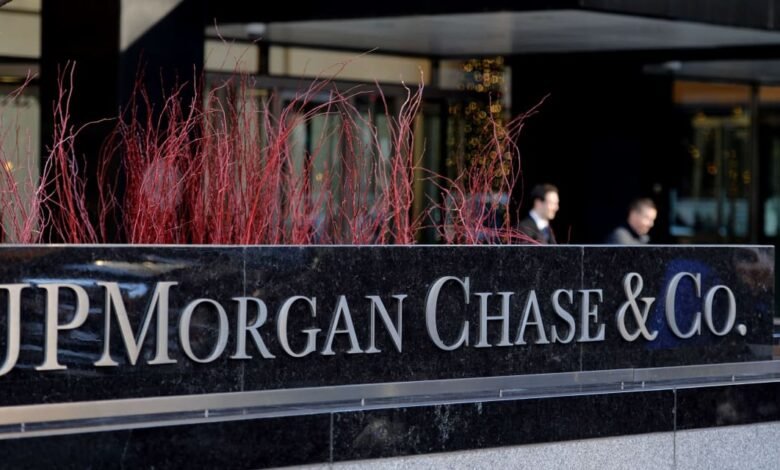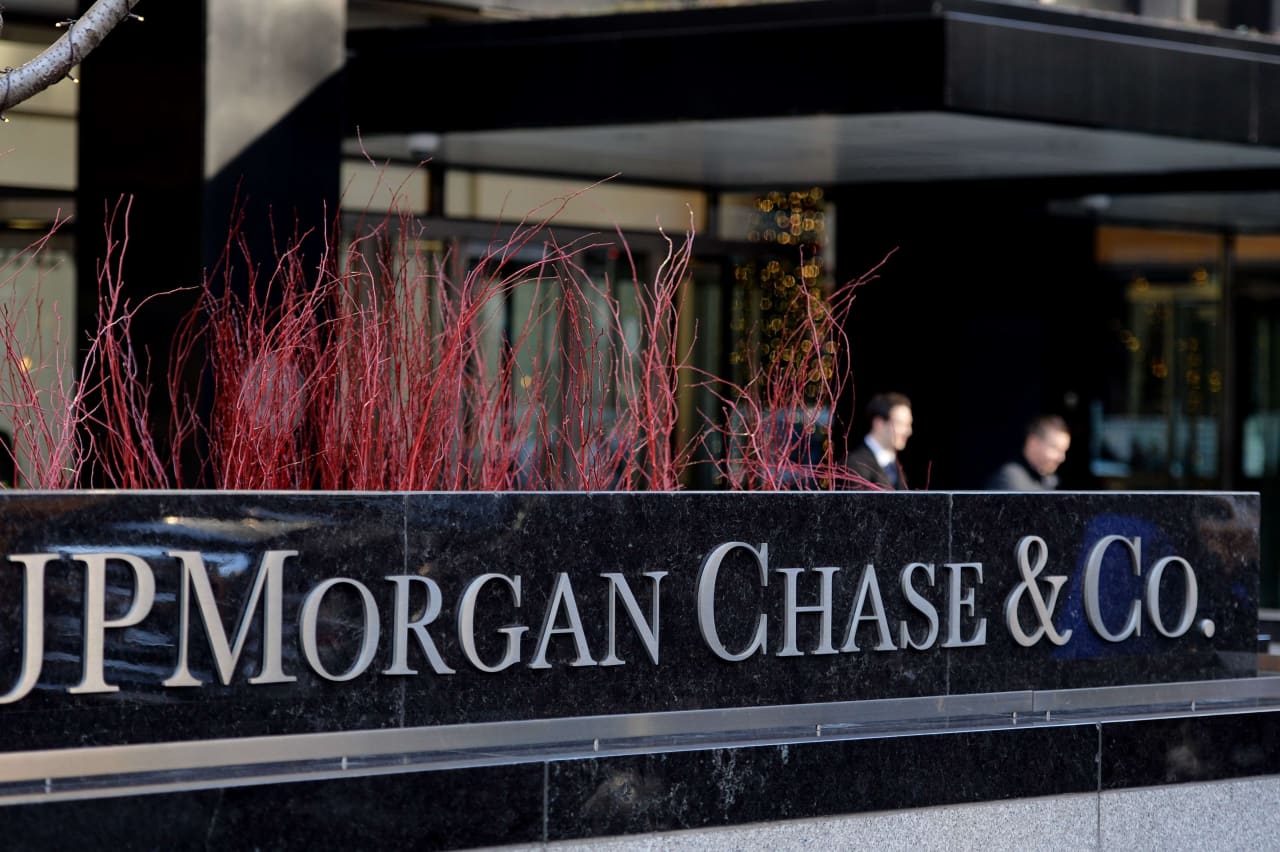This earnings season will be the first big test of the market’s year-end rally. The forecasts don’t look great.

Markets closed out 2023 with an early celebration of 2024, as hopes for lower interest rates led to hopes for a less squeezed U.S. consumer.
But just as this week’s New Year’s hangover clears, investors will be hit with another headache next week: fourth-quarter earnings season.
Those results — and, more important, whatever executives say about expectations for the year ahead — will be the first big test of whether investors’ year-end jubilation was justified. But Wall Street’s optimism for a bigger rebound during the fourth quarter has already faded, and companies are treading lightly. Some are still cutting costs.
And as JPMorgan Chase & Co.
JPM,
and Delta Air Lines Inc.
DAL,
lead off the earnings parade next Friday, analysts remain wary about a year that’s likely to be defined by continued high prices that will force shoppers to be more selective. There will also likely be lingering agita over the economy and the Federal Reserve’s economic engineering efforts, along with turmoil abroad and an ugly election battle at home.
“Many companies use their [fourth-quarter] earnings as an opportunity to provide their annual outlooks,” said Chris Marangi, co-CIO of value at Gabelli Funds. “Given the sort of near-term softness we’re seeing in the economy, we would expect that commentary to be generally cautious.”
As of Dec. 15, Wall Street analysts expect fourth-quarter per-share profit to grow 2.4% for companies in the S&P 500 index
SPX,
according to FactSet. That would mark the second straight quarter of earnings growth. But at the end of September, Wall Street thought fourth-quarter growth would be a lot better — at 8.1% — and analysts’ expectations tend to fall as more results come in.
Those estimates have been pulled lower in recent weeks by the energy sector, which is facing slipping oil prices and expectations of fatter supplies and not enough demand. The healthcare sector has also weighed on expectations, as demand for COVID-19 vaccines faded throughout last year.
Lowered estimates can make it easier for companies to beat them. But results last month from household names Nike Inc. and FedEx Corp., both of which are looking for ways to cut costs and recharge profit margins, could offer a taste of what’s ahead for everyone else.
Nike
NKE,
said it planned to cut up to $2 billion in costs over the next three years — including by shedding management layers — as more expensive essentials like groceries continue to keep customers from buying sneakers and sports gear. FedEx
FDX,
which is more than a year into a multiyear drive to slash billions of dollars in expenses, said customers were turning toward cheaper shipping options, and that shipping demand remained muted, after the pandemic’s delivery boom faded. Shares of both companies were hit hard following those results.
And investors looking for momentum from the holidays might find something a little more uneven, as customers gravitated toward the season’s biggest discount days.
“We saw incredibly strong performance for the Nike brand over the largest consumer moments, if you bookend from back-to-school and the prior quarter through Black Friday and Cyber Monday this quarter,” Nike Chief Financial Officer Matthew Friend said on the company’s earnings call last month. “But in the periods in between, we saw softer performance in the marketplace.”
In 2021, corporate profit margins overall reached reached heights that had never been seen before. In 2022, companies collectively nearly pulled off a repeat, as businesses used convulsions to the world’s supply chains and worker demands for better pay to justify charging customers more. How much that grip on prices eased last year depends on the industry. But heading into this year, pressure to keep margins from slipping further from the highs of 2021 and 2022 hasn’t let up.
Nancy Tengler, the chief executive and chief investment officer of Laffer Tengler Investments, said more businesses could lean on technology to keep costs low and boost productivity, aiding margins in the process.
“I think where you’re going to see it is (in areas where) companies are able to solve their problems without hiring people,” she said.
But she and other analysts expect a bumpy ride for the economy and the markets this year. Some of the turbulence, she said, could come from murky messaging from the Fed itself, which teased the possibility of interest-rate cuts last month, but also, in a meeting that same month — minutes of which were released this week — signaled openness to more rate hikes.
“Right before the [Fed] chairman told us that they had begun to talk about rate cuts, he had said they were going to be higher for longer, just a few weeks before,” Tengler said. “That’s been the pattern throughout.”
The Federal Reserve began raising interest rates in an attempt to bring inflation down. The intent was to spook people and companies out of borrowing money, expanding their businesses and buying things in hopes that the economy, in turn, would cool down and force businesses to lower prices to retain customer interest. Macquarie analysts, in a note on Wednesday, said rate cuts weren’t a guarantee.
“In today’s [Federal Open Market Committee] Minutes, traders will want to focus on just how cursory or intense the discussion was about cutting the policy rate,” they said. “Although [Fed Chair] Jay Powell hinted at a robust discussion around cutting rates on December 13, other Fed speakers have since warned that rate cuts are not imminent.”
Brett House, a professor of professional practice in economics at Columbia Business School, said that if the Fed cuts rates too soon, prices could still end up rising on the back of rejuvenated consumer demand. But he said that scenario was unlikely, since much of the inflation the U.S. has seen over the past few years has been driven by global markets for food and fuel, and by Russia’s invasion of Ukraine, which disrupted the flow of oil and grain and sent their prices higher.
Outside of those basics, House said, prices have come down for other goods. However, he said, prices are higher for services, as people continue to spend their money on travel, concerts and dining out. But while wages — and in turn spending power — have increased, he said the moment was a rare one.
“I don’t think anyone should see this as some kind of massive tipping of the balance of power toward labor,” he said.
“It is doing a bit to catch up against some of the increase in costs that households have faced over the last couple of years,” he continued. “But it remains the case that the inflationary period we’ve just seen has been disproportionately more favorable to the highest-earning Americans than it has for lower-earning workers.”
Tengler said tech companies were among those that could still deliver results regardless of what happens with interest rates this year, helped by wider adoption of cloud computing and artificial intelligence, while Marangi said that lower rates could take the heat off companies that are smaller and that have more debt, allowing them to perform better.
Lower rates could also help shoppers. Target Corp.
TGT,
executives have noted that higher interest rates and the resumption of student-loan payments have weighed on spending for discretionary items, and that shoppers have delayed purchases of cold-weather items like denim and sweaters. Electronics retailer Best Buy Co.
BBY,
meanwhile, in November lowered its annual sales outlook. Items like clothing and electronics have been sold at a discount over the past year.
The 2024 presidential election is also likely to shape markets and executive sentiment this year, as investors digest polling data and policy proposals. Marangi said he felt that many investors had avoided the consideration of a Biden-Trump rematch, as well a potential replay of former President Donald Trump’s efforts to overturn the 2020 election, in what was already a tempestuous year for the economy.
“Resilience carried us through 2020, and a resilient consumer has carried the economy,” he said. “We’ll need another dose of it should we see some unusual activity around the 2024 election.”
The calls to put on your calendar
JPMorgan, Delta and the consumer: Both JPMorgan and Delta report on Jan. 12.
Investors and analysts, as they usually do, will look to remarks from JPMorgan Chief Executive Jamie Dimon for a big-picture view of the economy and the banking sector. The banks could find themselves caught between the impact of higher interest rates — which boost the money banks make on loan repayments but hurt the economy — and lower rates, which do the opposite. Consumer credit, delinquencies and deal-making trends, following last year’s relatively cautious IPO market, will also be areas of focus.
Meanwhile, ahead of a conference last month, Delta stuck with its fourth-quarter and full-year outlook amid continued questions about the sustainability of the postpandemic travel rebound. Chief Executive Ed Bastian said that while corporate-travel trends might still be muted, new forms of travel — resulting from hybrid work and more people working from anywhere — have risen to take its place. He said financials would be even better if the airline had more jets in its fleet.
“I think the incentive to travel is as strong as it’s ever been in certainly my 25 years in this industry, and I expect it’s going to continue to be strong,” Bastian said. “I see nothing that’s going to slow it down.”
The numbers to watch
Other bank results: Bank of America Corp.
BAC,
Wells Fargo & Co.
WFC,
and Citigroup Inc.
C,
also report results next Friday. Those results will add more detail to JPMorgan’s broad strokes, as investors look for takeaways about how banks are preparing for 2024.
Still, the numbers from the biggest banks, and whatever data investors and the Fed can glean from the broader economy, don’t always reflect the struggles of smaller businesses and consumers.
“The numbers that the Fed is looking at are not really how Americans live,” Tengler said. “If I’m in Middle America, and I’m still paying 20 percent more at the grocery store, but the rate of inflation has slowed, that’s not really a benefit for me.”






